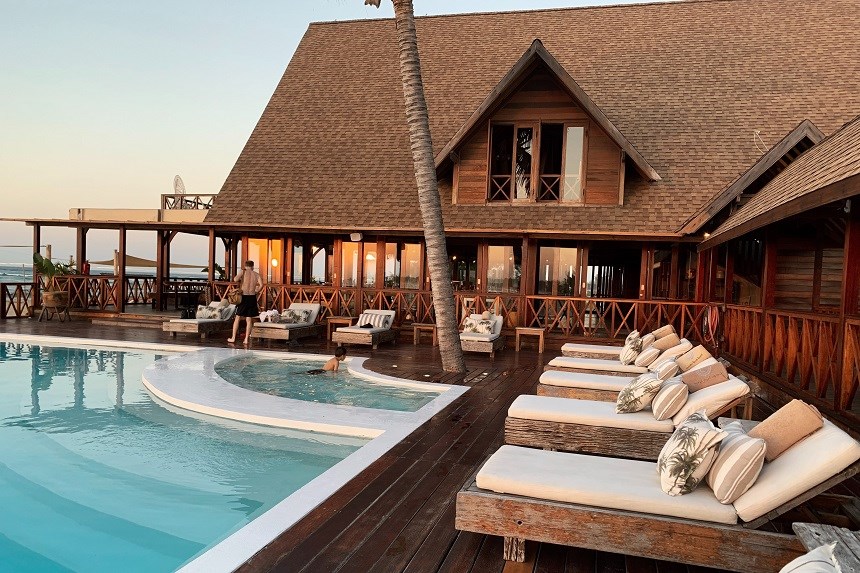
As vaccinations help put the end of the coronavirus pandemic in sight, it’s safe to expect a surge of travellers this summer. Will this translate to growth for hotel companies? And which brands will do the best?
Hotels have been busy behind the scenes in 2020, repositioning themselves for the return of travellers and strengthening their brands and business models. The winners will emerge with economic moats, or a strong competitive advantage.
“Our long-term outlook assumes a full recovery in hotel revenue per available room, by 2023,” says sector strategist Dan Wasiolek. “We don’t see the pandemic posing a long-term threat to the hotel industry. We’ve already seen evidence that the pandemic did not damage the appetite for hotel visits, and we think this stands to persist.”
AGF’s Tony Genua agrees. He added Hilton (HLT) to his five-star rated AGF American Growth Class Series F portfolio last year, as well as Wyndham (WH) in his AGF Global Select and AGF U.S. Small-Mid Cap funds – both also five-star rated. “The growth and improvement in the hotel industry over the next several years is very promising,” says Genua, adding that the guest mix could look a little different going forward.
“While we believe that leisure travel will rebound strongly, business travel may see a more tempered recovery, as some elements of this past year’s working conditions (work-from-home hybrid model, more video conferencing, etc.) remain with us post-pandemic,” says Genua.
Work From Hotel?
Wasiolek also sees the risk of increased remote work keeping employees at home. “The accelerated use of video conferencing during the pandemic could lead to lower long-term levels of corporate travel,” he says, while noting that the altered guest landscape could make up for any ‘pure’ business travel losses. “We think that some sustainment in the recent bump in remote working caused by COVID-19 will prompt incremental leisure or business/pleasure trips, benefiting hotel operators that can offer a comfortable work environment in a pleasant location.”
Weakness in business travel could indeed be less of a concern with more vacationers and hybrid worker/vacationers checking in. “The potential for increased leisure travel in the hotel space could remain if remote working doesn’t entirely abate,” says Wasiolek.
In the context of the wider travel industry, the situation leaves hotels better off than airlines, adds Genua. “We believe this dynamic (surging leisure travel, more tempered recovery in business travel) will initially favour lodging companies over airlines, as many airlines have greater exposure from an earnings perspective to business customers. In addition, some travellers are exhibiting a greater willingness to arrive at their destination by car as some reluctance to air travel may persist.”
Who Will Get the Most Guests?
With the return of customers, investors should then look to who’s best positioned to be fully booked. Wasiolek looks to two key ingredients for a competitive advantage: “We see brand intangible asset and switching cost advantages as the main drivers of economic moats for hotel operators.”
Brand power and switching costs are interrelated as guest loyalty is accumulated and franchisees become less willing to leave. “Hotel brand intangible asset advantages take time and money to develop,” explains Wasiolek. “A hotel operator in its infancy needs to self-fund development to support unit growth of its brand and prove that the concepts can perform before third-party owners gain enough confidence to commit their own capital and join the company’s portfolio as franchisees.” This is combined with the fact that contracts are often 20-30 years for a franchisee and it’s expensive to change brands, putting voluntary attrition for strong franchises in the low-single-digits come renewal.
Wasiolek finds franchisee loyalty and economic moats are particularly influenced by guest loyalty programs in the hotel space. “We believe it’s important to analyze industry loyalty exposure to help gauge moats,” says Wasiolek, “The reason loyalty programs influence hotel intangible asset and switching cost advantages is that third-party owners look at the immediate demand channel these provide when considering joining one of the chains. In our view, Marriott’s (MAR) and Hilton’s (HLT) loyalty presence offers a strong incentive to third-party hotel owners to join their brands.” Wasiolek’s fair value for the companies currently sees them trading an 8% and 24% premium, respectively, but he notes they are the clear loyalty leaders in the industry.
Big but Light Is Best
Genua also looks for a strong brand in his hotel picks, along with asset-light (franchisee) business models, and exposure to leisure travel.
"In the case of Hilton,” says Genua, “the company is a well-run, asset-light, fee-driven brand powerhouse with a global footprint. The company has a portfolio of 18 global brands, that includes more than 6,400 properties in 119 countries. It has a greater focus on franchising vs. managing and an asset-light model – and its resiliency was on display last year when Hilton’s pipeline grew 11% amidst the worst demand environment for hotels in history, with independent boutique hotels continuing to convert to branded hotels for access to the scale, negotiating leverage, and a larger pool of customers that comes with being a Hilton branded hotel. Finally, Hilton has lower exposure to luxury across its portfolio compared to its peers – we believe lower-end hotels are well-positioned in the near-term given the higher propensity for road trips and lower exposure to the business segment, though Hilton did note in its recent quarter that corporate demand had begun to improve.”
“Similarly, Wyndham (WH) also has a franchise-heavy exposure,” says Genua, “its platform consists of 20 brands operating in 80 countries, mostly at the low-end which accounts for approximately 90% of rooms. Wyndham has also been trading at a valuation discount relative to its peers, and recently posted its best month of occupancy in January since the pandemic began, driven by the successful capture of leisure travel.” Of the three hotels mentioned, Wasiolek’s fair value is closest to Wyndham’s current trading price: “Despite near-term coronavirus challenges, we expect Wyndham to gradually expand room share in the hotel industry and sustain a brand intangible asset and switching cost advantage.”























